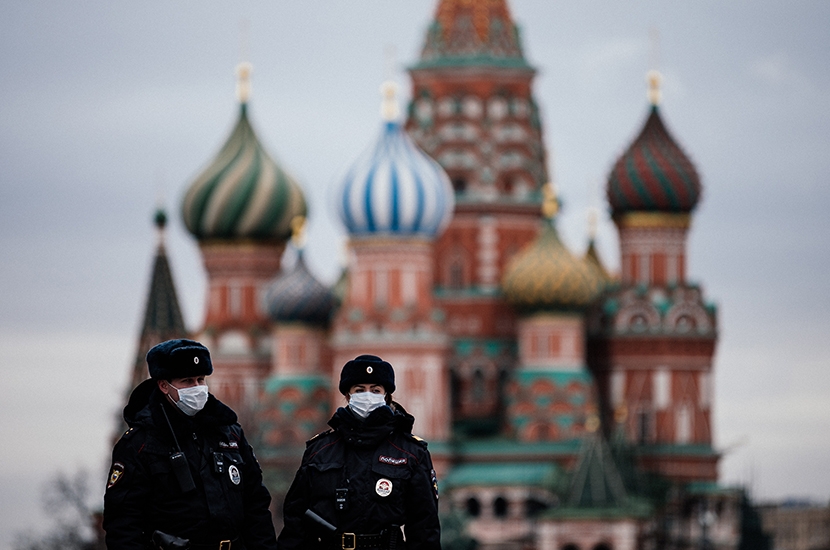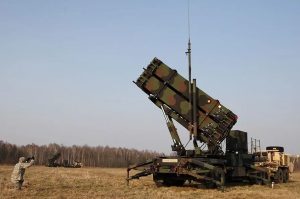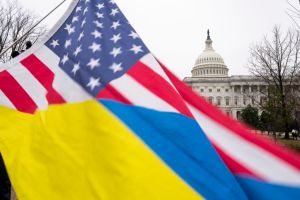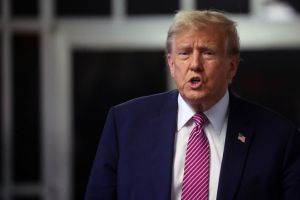The secret is out: the Russian government has been lying to its people. Officially, Russia’s coronavirus death toll for last year — as reported on state television and logged at the World Health Organization — was an impressively low 86,498 for a population of 146 million. In his traditional December press conference Vladimir Putin proudly reeled off statistics on how quickly Russia’s economy was recovering from the pandemic, and last month he made a triumphant address to a packed public concert to celebrate the anniversary of the annexation of Crimea in 2014. ‘Today is a holiday for our entire vast country,’ Putin told an 80,000-strong, maskless crowd at Luzhniki stadium. ‘Please, take a deep breath and answer this: do we love Russia?’ COVID-19 was not mentioned.
The reality, however, seems to be different. Russia’s excess deaths for last year stand at 323,802, some 18 percent higher than 2019. Many official Russian death certificates record unexplained ‘viral pneumonia’ as the cause of death, rather than COVID-19. By contrast the US experienced a 17 percent rise in excess deaths last year, 82 percent of them COVID-related. Britain reported the same 17 percent spike — though in the UK there were actually more COVID-related deaths than excess deaths, due to lower than normal mortality from seasonal influenza.
In short, either Russia has experienced a hitherto unexplained and unreported parallel pandemic that has killed more than 200,000 of its people — or the country in fact has just as bad a COVID death toll as any in the developed world.
So what did Russia do wrong? Like many European governments, including Britain’s, the Kremlin initially played down the seriousness of the outbreak. In March and April last year, Russia sent humanitarian shipments of PPE equipment to Italy and to the US, a PR stunt widely covered by state-controlled media. Then, as deaths and infections climbed, Russia moved from denial to suppression, shutting major cities by March 30 (the UK locked down on March 23). But unlike the UK, Russia also quickly stopped international flights. And Russia’s lockdown was second only to Wuhan’s in its stringency. On certain days citizens were allowed out to walk only within 200 meters of their homes.
Russia also took a leaf from China’s book in arresting whistleblowing doctors such as Anastasia Vasilyeva, who had publicly called for healthcare staff not to work without PPE equipment and raised millions of rubles from the public to provide it. Dr Vasilyeva was arrested in April last year as she delivered a carload of PPE gear to a rural hospital and was charged — apparently without irony — with breaching lockdown regulations.
Britain’s public health message during the pandemic was to keep people safe. Russia’s was to keep people calm. No surprises there — deception has been the Kremlin’s default position, historically, when faced with public health disasters. Chernobyl is the most famous example. But almost as notorious was the 1979 cover up of a leak of weaponized anthrax spores from a Soviet military research facility near Sverdlovsk (now Yekaterinburg) that killed approximately 100 people.
On the face of it, Russia’s COVID under-reporting has been no exception to that entrenched habit of official dishonesty. But while there has undoubtedly been a degree of official suppression, there’s also a legitimate debate about how COVID deaths should be recorded. In the UK, anyone with COVID symptoms within 28 days of death is chalked up to the pandemic. In Russia, pathologists record only the primary cause of death, even if COVID is present. That doesn’t fully explain the vast disconnect between excess Russian deaths and reported pandemic mortality, but it does go some way.
What is more striking — and perhaps instructive — is how Russia has moved out of lockdown. By July 25, Moscow bars, nightclubs and restaurants were open and international flights had resumed to a green list of safe countries that included Britain (though the EU barred Russian citizens for COVID reasons). Apart from a two-month 11 p.m. curfew on nightlife from October to January, Russia has remained out of lockdown ever since.
Importantly, according to the official COVID mortality statistics published by Rosstat, the pattern of Russian COVID deaths had been a low peak in April-May, followed by a steady rise from August to a December peak nearly three times higher than the spring death toll. At the same time the biggest boom in non-COVID excess mortality figures occurred during Russia’s first wave, suggesting that most of the misreporting occurred early in the pandemic. In any case, that’s very different from Europe’s rollercoaster pattern of mortality linked to on-and-off restrictions.
So perhaps a better question is: what has Russia got right? And was Russia right to resist second and third lockdowns even as the death toll rose steadily — but without overwhelming the healthcare system?
Russia’s health service is infamously underfunded, but many of its doctors remain world-class. According to one senior Moscow intensive care doctor (who asked for anonymity when discussing government COVID policy) Russian doctors were among the first to identify ways of keeping COVID patients alive. ‘Emergency room clinicians very quickly realized that putting patients on ventilators was a terrible idea,’ he says. ‘We stopped using [ventilators] long before they were abandoned by our European colleagues. We also found by trial and error that blood-thinning agents were the key to saving the most serious cases, as [Covid] appeared to thicken bodily fluids, especially the lining of the lungs.’
Russian authorities have also been ruthless in forcing the vulnerable elderly to isolate, even as lockdown was eased for everyone else. Moscow’s over-65s remained confined in their homes even as young Muscovites packed nightclubs. Police questioned my Russian mother-in-law whenever she ventured to the shops, pensioners’ free travel passes were suspended and babushkas were turned off buses and sent home. At the same time local councils (at least, well-funded ones like Moscow’s) organized surprisingly efficient teams of municipal workers to do shopping for the elderly twice a week.
The state also adopted Chinese-style techniques to isolate all COVID patients. People with symptoms were told to stay at home and call an ambulance, which would arrive with a doctor and administer a test. If the test was positive, patients in Moscow and St Petersburg would be issued with a government-provided smartphone on which they were required to photograph themselves at home, along with a snapshot of a thermometer showing their temperature.
Finally, of course, Russia was the first country in the world — pace Boris Johnson — to produce and roll out a COVID-19 vaccine. On August 11, Putin announced that the Sputnik V vaccine had been approved by Russia’s health regulator for widespread use (the Oxford-AstraZeneca vaccine wasn’t approved by British regulators until December 30). By late August, the jab was being administered to Russian healthcare workers, teachers and to Putin’s own daughter, despite protests from the international medical community that the rollout was dangerously rushed. By December, Sputnik V was freely available, without lines or booking, to anyone who wanted it (including foreigners). Russia’s overall death toll had dropped a dramatic 36 percent by February. At the same time the Lancet confirmed that Sputnik V was in fact 91.6 percent effective, making it the third best COVID vaccine in the world, after Pfizer and Moderna.
Russia has used export of Sputnik as a diplomatic leverage over vaccine-starved Europe, with Germany expressing interest and Hungary and Slovakia ordering doses despite hold-ups with certification by the European Medicines Agency and a recent row with Slovakia over apparent differences in the doses they received and the drug reviewed by the Lancet. Since January, thanks to Sputnik, theaters have been working at full capacity and bars, nightclubs and restaurants are open all night. The only visible reminders of COVID are hand sanitizer stations and restaurant staff in masks. Is that irresponsible, or logical? Years — indeed generations — of official deception has eroded Russians’ trust in their government so much that more than half disbelieve the mortality statistics, but the skeptics are split evenly between those who think the numbers are exaggerated and those who think they’re being under-reported. According to a February poll, 60 percent of Russians are planning to refuse the vaccine, while almost two-thirds believe that COVID-19 is a ‘new form of biological weapon’.
As usual, Russians are their own worst enemy. In the rush to cover up the truth, they have tarnished their world-beating achievement in developing and deploying the first COVID vaccine. It has also obscured what could have been, if Russia had a bit more credibility, as important a contribution to the debate on COVID response as Sweden’s. Russia’s vaccine rollout heralded an immediate and near-complete (except for international travel) return to normality. There’s a lesson in that.
This article was originally published in The Spectator’s UK magazine. Subscribe to the World edition here.


















